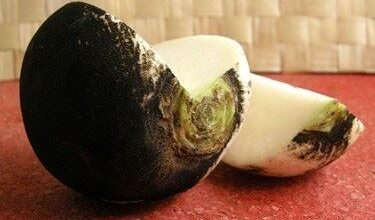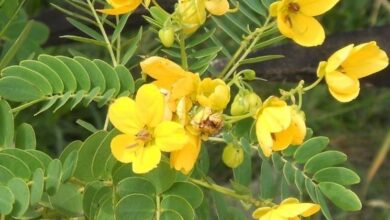Fumaria officinalis

Today we are going to talk about a plant that has been used for a long time as a medicinal plant thanks to the active principles that it has so useful. This is the Fumaria officinalis. This plant has been used in traditional medicine for multiple diseases. The area of distribution is almost global, so finding it is not a problem. It adapts very easily to various types of soils and thanks to its great ability to withstand various climates. It is considered a type of adventitious herb in many crops around the world.
We are going to dedicate this article to tell you the characteristics of Fumaria officinalis and its medicinal uses.
Main features

It is a plant that appears in areas where there are dry plains. It is not a plant that needs a lot of water, so it can easily adapt to environments with somewhat more adverse conditions. Since in many crops such as cereal, it grows without rhyme or reason, it is considered a weed and is eliminated. On the other hand, in irrigated crops such as beets, we can also see Fumaria officinalis growing without any problem. This further reflects the extreme capabilities of this plant to adapt to both dry and wet environments.
It is an annual plant whose inflorescences are purple in color and arranged in clusters. In the spring time, which is when flowering takes place, it is quite well known and characteristic . Vulgarly we know it by the name of the blood of Christ, fumaria or moth. The name is due to the color of the inflorescences.
Of all the plants that make up the genus Fumaria, Fumaria officinalis is the most representative and well-known plant. The name of Fumaria comes from the similarity that the color of the roots have with the smoke. Even the smell of them also reminds us of smoke. Fumus means smoke, so it makes sense to call it that. In ancient Rome, juices were made from the flowers and leaves of this plant and caused eye irritations like smoke.
It is a plant that comes from Europe, but is currently found almost all over the world. It was introduced in America and Asia. In our country we find it widely distributed and we find a greater number of specimens if we go through the Mediterranean area rather than the Cantabrian.
Medicinal uses of Fumaria officinalis

It is a plant with various medicinal uses thanks to its active principles. We can see that it contains numerous alkaloids that are used for their effects on humans as traditional medicine. Among the best known alkaloids and with more effects that this plant has, we have protopine. This active principle is used on numerous occasions for the treatment with analgesics and antihistamines. What’s more, protopine is a derivative of opium, since it comes from the Papaveraceae family.
This plant is commonly used in herbal medicine thanks to its antispasmotic, anticholinergic, antiarrhythmic and antibacterial regulatory effects. There are numerous studies that what they do is isolate certain active principles of diverse medicinal plants to see their effects both together and separately. There are many cases in which the effect of several active ingredients are synergistic, so they act with more than double the effect together than the same separately. Therefore, it is important to do all this type of test so that the effects of each active principle can be well known. The good thing about these studies is that Fumaria officinalis is found in almost all of them for its diverse and beneficial properties.
Many of these studies do not get to know well the dose and the effects that are intended to achieve with the application of fumitory. It is difficult to know the full effects of a plant when its use is no longer as frequent as before.
Study of fumaria

To see the tests that are being done with fumitory, we are going to analyze a study in which the concentrations that are used to treat various pathologies are verified. In the study we analyzed, 200 g of fumaria was used. In this study, phenolic compounds and the possible reactions that they could exert as a good antioxidant were analyzed. There are more studies that prove its ability to kill harmful bacteria in the body.
Returning to the study, of the 32 microorganisms that were exposed to the extracts of this plant, 21 survived. The conclusion of this study is clear. The Fumaria officinalis has different levels of antioxidant and antimicrobial action. This requires further study to find out more about the concentrations that are appropriate for each type of disease caused by bacteria.
It is also important that, in future studies, the possible toxic effects of the fumitory compounds are evaluated. This is also usually done with the rest of medicinal plants since, with certain concentrations, it is usually a toxic.
Necessary care

To finish the article, we are going to give some main guidelines that are needed if we want to take care of smoking at home. Although we have already seen that it adapts to almost any terrain and environment, it is necessary to meet some requirements as we will see below. The first thing is irrigation. Being able to adapt to both dry and humid environments, it is not a plant that needs a lot of watering. They must be somewhat scarcer. The indicative to be able to water again is that the earth stays dry.
It not only serves as a medicinal plant, but also for a slope or to place near the walls and prevent the erosion of our garden. As for the soil, you do not need any type of special soil. It is capable of proliferating in any type of soil, even if it is stony. Therefore, we will not have problems. It needs sun exposure if we want it to grow in good condition.
I hope that with all this information you can learn more about Fumaria officinalis and its medicinal properties.




